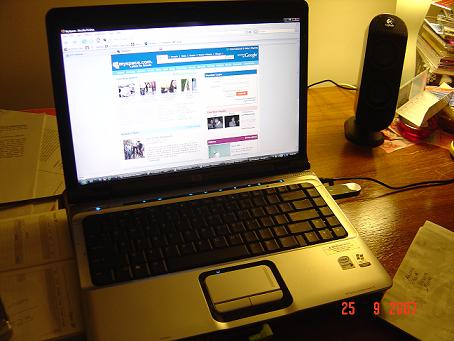The Effects of Social Networking sites.
Self Esteem
In 2006 a Dutch study was conducted by Valkenburg, Peter and Schouten to investigate the wellbeing and social self-esteem of teens associated with Friend networking sites.
The study showed that positive feedback on profiles enhanced adolescent’s social self-esteem and negative feedback decreased it.
The study showed that the tone of reaction developed from social networking sites feedback varied. Out of 881 adolescents, 5.6% reported that feedback had always been negative. 4.9% indicated that feedback was predominately positive 35% had established a friendship and 8.4% had formed a romantic relationship.
Even though a small percentage continuously received negative feedback on their sites, this has a significant impact on their self esteem.
Harassment and Safety
Psychologist Doctor Larry D. Rosen, from California State University, has done many studies on the effects of social networking sites, especially MySpace. He has found that the media and parents have over exaggerated the threat of sexual predators and harassment online.
He says in one study: ‘Parents, and the media, should stop focusing on sexual predators and start assessing the MySpace actions of teens that may make their adolescent transition easier or may provide additional struggles in a time of a constant search for identity and direction.’ (Rosen 2006).
Dr. Rosen found that stalking is in fact a very rare occurrence initiated through sites like MySpace and often, there was no lasting affect on the ‘victim.’
Cyberbullying is another issue which the media has brought into the public eye.
Annaleise Robertson a psychology student at the University of Sydney says: “It’s no longer limited to the schoolyard, as bully’s can now harass their victims online by posting negative messages or even creating entire sites aimed to victimize another student. Plus once these things are put online, they’re very hard to get rid of.”
However, Dr. Rosen says: “My research shows that not only is it not a “major” problem, but the young internet users are both handling any attempted cyber bullying easily and appropriately but they are not upset by the online bullying.”
It appears that teens today are more aware of the dangers of the technology they use, not only through messages in the media, but also through their own use and experience.
Dr. Rosen’s study shows several responses by teens to being approached for sexual liasons online.
For example
- “Yes. I got hit on by a lesbian.”
- “ya some guy was hitting on me but I just blew him off.”
- “I try to avoid the situation as best as possible.”
- “Perverts always email me but I just ignore their messages and block them on
myspace so they can’t contact me again.” - “One time, a guy, probably 18 or 19, kept messaging me on Myspace. He
continuously asked me inappropriate questions and made perverted remarks. The good thing is that you re allowed to block people and he is of course blocked.”(FromRosen, Larry D. Ph.D “Sexual predators on
MySpace: A deeper look at teens being stalked or approached for sexual liaisons”2006)
Teens are more aware of online dangers than we think.
Annaleise says: “There’s always a tendency I think to get hyped up about the negative effects of new things, especially technology. This happened with TV, and now it’s happening with the Internet and online networking sites.
“While people focus on all the negative aspects like bullying, social isolation and low self-esteem, they tend to neglect the numerous potential benefits of such technologies. For example, it is possible creating a MySpace page may increase a person’s social support network, decrease their social anxiety, and increase their self-esteem and computer confidence.”
Dr. Rosen believes parents are the only people who can censor, or handle their child’s identity online by being more proactive with internet use.
“In my research most parents are unaware of what their children are doing online and how long they are doing it. Parents need to be more proactive about talking with their children and setting up clear, but fair boundaries and limits on internet use,” he says.
“Parents need to talk to their children about what to post and why, so that it does not come back to haunt them in the future,” says Dr. Rosen.
This is becoming increasingly important as more and more employers are looking to the internet to gain more information about potential candidates for competitive jobs.
In a recent study, Dr. Rosen found that parents, who had created a MySpace site themselves, were less worried about sexual predators and stalkers online. By getting a feel of MySpace, parents can become aware of the world their children are engaging with.
However he warns: ‘Do not use your own account to spy on your children — this will just make them more likely to mistrust you and be unwilling to talk with you. One recent phenomenon is for children to create shadow pages where they let their parents view their safe MySpace page while maintaining another where they really reside.’ (Rosen 2006).
Putting yourself out into the music world!!
The band Ladies and Gentlemen.
Sites like MySpace are not only about creating individual relationships. MySpace also offers a space to young musicians to advertise, and put their music out into the world.
Jared Baca, the lead singer in the band ‘Ladies and Gentlemen’ says: “MySpace makes it easy to promote our shows, and put our music up without having to pay for publicity.”
“We’ve been able to network with other bands as well as venues, and our fans, the most important people,” he says.
The band first created their MySpace site in November of 2006. They currently have 801 friends. The site allows them to inform people of their upcoming shows, as well as distribute tracks.
Fans are also always able to communicate with the band, provide feedback and keep up to date with their schedule.
The Future
It becomes clear, that social networking sites are not all bad, contrary to popular belief in the media. Dr. Rosen says that they are definitely not just a phase.
“It is a necessity in this day and age where most children are not allowed to socialize outside of school hours and need to fulfill their social needs,” he says.
Social networking sites allow teens to be creative, keep in contact and build new relationships whilst developing an identity and expressing themselves.
Not only are the graphics and applications changing, but also use and purpose.
“I have seen it mushroom from a forum for specific groups to discuss common interests to a place where most teens and pre-teens hang out and communicate,” says Dr. Rosen
References:
Rosen, Larry D. Ph.D. “Memo to all parents of Adolescents: It’s time to create your own MySpace page”, Short report California State University, Dominguez Hills, July 27, 2006, available here.
Rosen, Larry D. Ph.D “Sexual predators on MySpace: A deeper look at teens being stalked or approached for sexual liaisons” Short Report 2006-01, California State University, Dominguez Hills, July 2006, available here.
Valkenburg, P. M., Jochen, P., & Schouten, A. P. (2006). “Friend Networking Sites and Their Relationship to Adolescents Well-Being and Social Self-Esteem”, The Journal: Cyberpsychology and Behaviour, 9(5), 584-590.
Magid, M. and Collier A., MySpace unravelled: A Parents guide to Teen social Networking, Peachpit Press, USA, 2007.



